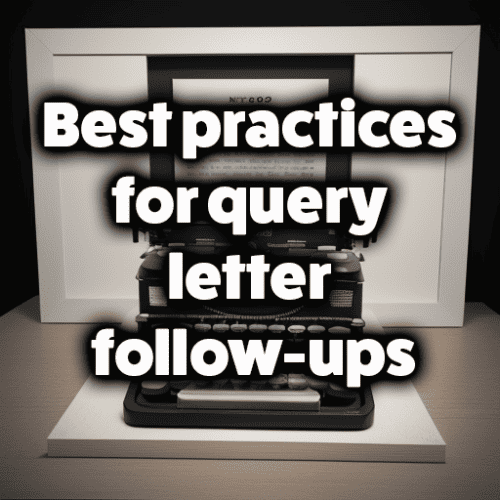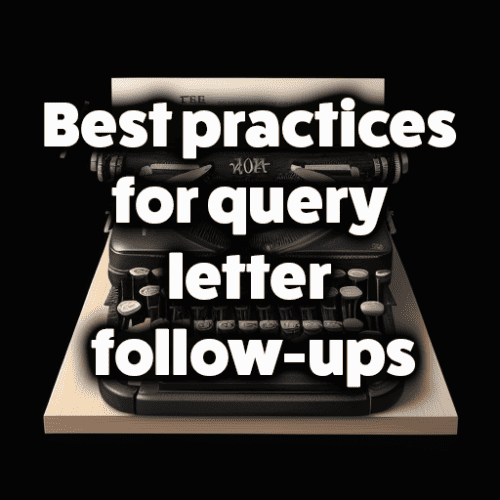Best practices for query letter follow-ups
Best practices for query letter follow-ups. Getting your writing noticed by literary agents or publishers isn’t merely a game of chance. It’s a process, often involving multiple rounds of communication. Enter query letters and the equally significant follow-ups. But what are the best practices for query letter follow-ups? How can a platform like EditMojo.com enhance your success? This article explores all these aspects and more.

Understanding Query Letters
A query letter is your first introduction to a literary agent or publisher. It’s your opportunity to pitch your manuscript, showcase your talent, and potentially secure a publishing deal. A strong query letter typically contains a catchy hook, a mini-synopsis of your book, and some information about yourself.
However, crafting a powerful query is an art form with many potential pitfalls. Writing too much or too little, forgetting to personalize your letter, or not adequately proofreading are just a few examples of what can go wrong. Always remember: your query letter is your foot in the door. Make sure it leaves a memorable impression.
Importance of Follow-ups
We’ve all heard the saying, “Patience is a virtue,” and this couldn’t be more relevant than when discussing query letters. Literary agents and publishers are busy people who receive countless queries. Hence, it may take time to hear back from them.
That said, follow-ups can be a critical part of the process. They demonstrate your dedication and serious interest in working with the recipient. However, there’s a fine line between being persistent and being a nuisance. The secret to successful follow-ups lies in understanding when it’s appropriate to reach out again.
Best Practices for Writing Follow-up Letters
The act of following up is like walking a tightrope. You must maintain a delicate balance between persistence and respect. When writing a follow-up letter, keep the tone professional and courteous. Be succinct and state the purpose of your email promptly. Mention your original query letter, the date you sent it, and the title of your manuscript.
Persistence is key, but so is patience. There’s a common saying among writers: “The squeaky wheel gets the grease.” However, remember not to squeak too much or too loudly.

Timing of Follow-ups
Understanding when to send a follow-up is crucial. It’s generally acceptable to follow up if you haven’t heard back within the typical response time stated by the agent or publisher. If no specific timeframe is given, waiting for around six to eight weeks is considered reasonable.
That said, always respect the recipient’s time. Avoid sending multiple follow-ups within a short period. Being considerate of their workload will reflect positively on you and your professionalism.
How to Handle Responses
Responses to query letters and follow-ups can vary widely. An acceptance is a cause for celebration. But remember, this is just the beginning. It’s now time to discuss contractual details and possibly negotiate terms.
On the other hand, dealing with rejection is an integral part of the process. Don’t be disheartened. Instead, use it as an opportunity to learn and grow. If the agent or publisher provides feedback, take it into consideration for your next query.
Finally, not getting a response can be disheartening. But don’t lose hope. The lack of response could be due to many factors unrelated to your query’s quality.
Leveraging EditMojo.com for Success
EditMojo.com is an invaluable resource that can bolster your follow-up process. The platform offers a plethora of features beneficial for writers. Its top-notch editing services can help you polish your follow-up letters, ensuring they make a positive impression. The tracking feature can help you monitor your submissions and follow-ups effectively, taking the guesswork out of the process. Plus, the platform offers a wealth of templates to guide your writing.
In addition, countless users have had positive follow-up experiences using EditMojo.com. For instance, acclaimed novelist Jane Doe attributes her success in securing a publishing deal to the platform’s effective tracking system and quality editing services.
Navigating the world of query letters and follow-ups can be complex. However, by understanding the significance of follow-ups, learning the best practices for writing them, and leveraging the power of EditMojo.com, you can significantly improve your chances of success. So don’t give up. Keep writing, keep improving, and most importantly, keep following up. Your literary success may be just an email away.

Additional Resources
If you’re keen to dive deeper into the realm of query letters and follow-ups, consider exploring resources like Writer’s Digest or Query Shark. They offer a wealth of information to sharpen your querying skills.
Ready to get started with EditMojo.com? Visit their website to learn how you can optimize your follow-up process today. Remember, every great writer once stood where you are now. So press on, and let your story be heard.
Top Five Questions and Answers
| Questions | Answers |
|---|---|
| What is the purpose of a query letter? | A query letter serves as your introduction to a literary agent or publisher. It presents your manuscript and gives the recipient a taste of your writing style. |
| How should I write a follow-up letter? | Maintain a professional and courteous tone. Briefly remind the recipient about your original query and provide necessary information such as the date of the original query and your manuscript title. |
| When should I send a follow-up? | If the agent or publisher has specified a response time, wait until that period has passed. If not, waiting six to eight weeks after your initial query is generally acceptable. |
| How should I handle rejection? | Rejection is a part of the process. If the agent or publisher provides feedback, consider it a learning opportunity for improving your next query. |
| How can EditMojo.com help with my follow-ups? | EditMojo.com offers a range of tools including editing services for polishing your letters, templates for guidance, and a tracking system to manage your submissions and follow-ups effectively. |
Top Ten Resources and Further Reading
| Resource | Description |
|---|---|
| EditMojo.com | A comprehensive platform to streamline your follow-up process. |
| Query Shark | A blog that provides critical analysis of query letters. |
| Writer’s Digest | An extensive resource providing tips on writing, including crafting query letters. |
| Query Letter Template | A helpful guide from MasterClass on how to write a compelling query letter. |
| AgentQuery | A database of literary agents, along with useful resources on querying. |
| Reedsy | A guide on how to write a query letter with templates and examples. |
| Publishers Marketplace | A great place to research agents and publishers, and understand the industry. |
| How to Write the Perfect Query Letter | An article from Writer’s Digest with tips on writing the perfect query letter. |
| How to Follow up on a Query Letter | A guide from Gotham Writers on following up on query letters. |
| Manuscript Wishlist | A resource to understand what agents and publishers are looking for. |
Interactive Quiz: Test Your Query Letter Follow-Up Knowledge
- What is the purpose of a query letter?
- A. To pitch your book to an agent or publisher.
- B. To request a book review.
- C. To ask for a book endorsement.
2. What should you include in a follow-up letter?
- A. The date of your original query and your manuscript title.
- B. A copy of your entire manuscript.
- C. A demand for an immediate response.
3. When should you send a follow-up?
- A. Immediately after sending the original query.
- B. After the stated response time or, if not mentioned, typically around six to eight weeks after your initial query.
- C. Every day until you receive a response.
4. How should you handle rejection?
- A. Take it personally and stop writing.
- B. Consider it a learning opportunity for improving your next query.
- C. Respond with anger to the agent or publisher.
5. What services does EditMojo.com offer to help with your follow-ups?
- A. Editing services and submission tracking.
- B. Door-to-door delivery of your printed manuscript.
- C. Ghostwriting services for your book.
Answers: 1.A, 2.A, 3.B, 4.B, 5.A
